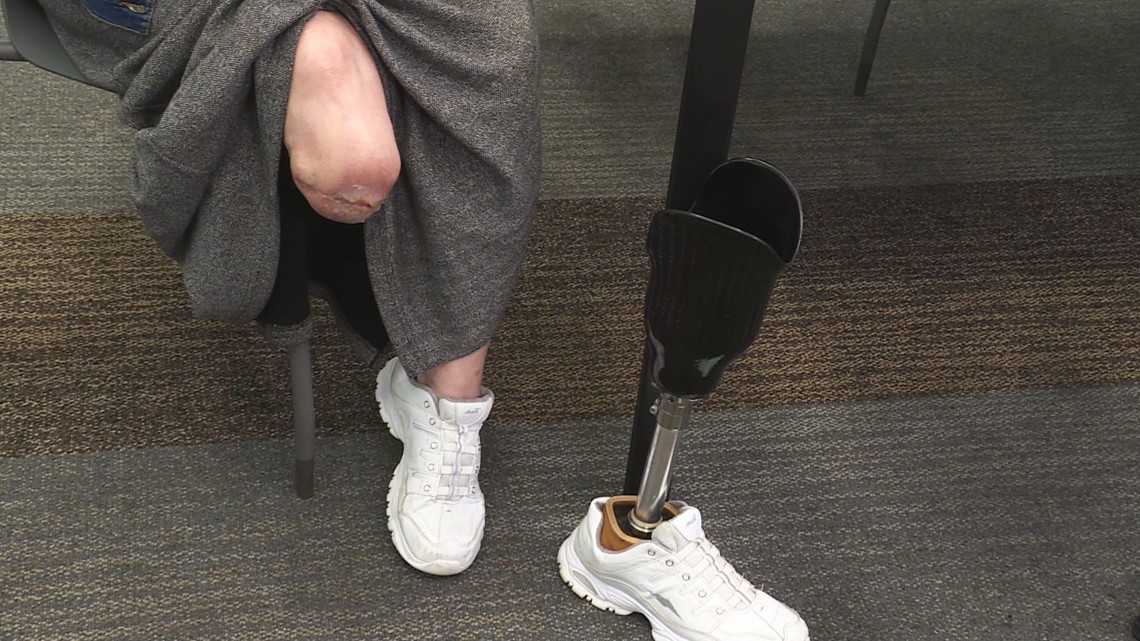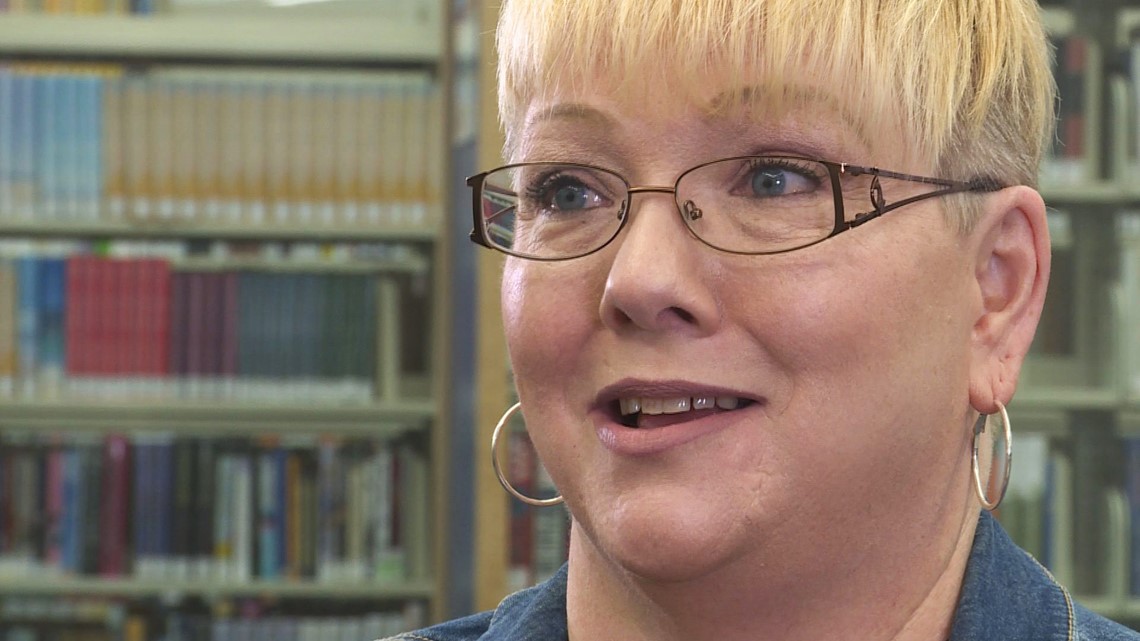LOUISVILLE, Ky. — Angie Summers is a Diabetic, one of 30 million Americans struggling to keep their blood sugar under control every day.
"I was diagnosed when I was in my early 20's," Summers said. "I think a lot of people look at it like, you did this to yourself."
For those with Type 1 Diabetes, they lack insulin, a key hormone we can’t live without. Others, like Summers, who are Type 2, can't effectively use what they have and there's no substitute. Yet studies have shown one in four Americans living with diabetes, ration their insulin because of its skyrocketing costs.
"It was there. It was right there and I couldn't afford it," Summers said. Since 2002, the average list price of insulin has more than tripled, according to the American Diabetes Association.
"With insurance, it ran me about $800 to $1,000 per insulin and I was on two. Needless to say, I just went without, for almost 4 years," Summers said. "I did not have insulin at all."
She paid the price for it about 6 years ago, far greater than what she would’ve spent on insulin.
"It was awful, I'm not gonna lie," Summers said.
She ended up in the hospital, with neuropathy, $200,000 in medical bills and within 6 months, lost her right leg below the knee.


"I still go to get out of bed and hit the floor, because I forget I don't have my leg and that's tough," Summer said.
Still, she calls herself one of the lucky ones.
"We have people dying because they can't afford their insulin," Summers said. She points the finger at the manufacturers of the drug, known as the Big 3: Sanofi-Aventis, Novo Nordisk, and Eli Lilly. Summers called them out in front of lawmakers back in August, during an Interim Joint Committee on Banking & Insurance, on accessible and affordable insulin.
"Pricing insulin at such an astronomical amount is nothing short of premeditated murder,” Summers said.
Novo Nordisk is the world's largest producer of insulin. A spokesperson says it recognizes prices are high, stating "as a company focused on improving the lives of people with diabetes, this is not acceptable." However, the company argues price is just one factor. It also blames the healthcare system in general, with middlemen negotiating prices between manufacturer and pharmacy.
It’s estimated a single vial of insulin costs between $3-$6 to produce, and yet today’s retail price in the U.S. can exceed $400.
The manufacturers push patients toward their cost-saving assistance programs, but diabetics we spoke to tell us only a fraction of people are eligible.
"They have all these programs which looks really good and sounds really good, until you realize nobody can get into them. But they're able to say, 'oh, well, we offer this and that,'" Summers said. "There's so many of us who just fall through the cracks."


Our local lawmakers are working to better the system, too. Earlier this year, Kentucky passed Kevin's Law, allowing a pharmacist to dispense an emergency supply of insulin to a patient without a current prescription.
In May, Kentucky's attorney general announced he was suing the three leading insulin manufacturers, accusing them of deceptive pricing schemes that have caused hardships in a state with high diabetes rates. But the biggest change will have to come at the federal level.
Today, Summers gets her insulin for free, a cost her friends have absorbed to ensure she always has it, but she knows that won't always be an option. So, she continues to fight.
"We know what you're doing. We know what you're charging. How much profit do you need? And how many people have to die for them to recognize, okay, we need to do something? Now, what are you going to do about it?" Summers asked.
Novo Nordisk's full statement, provided by Ken Inchausti, Senior Director of Corporate Communications:
While many can access and afford their medication through insurance coverage, we know that as the healthcare system has changed and a growing number of Americans with diabetes struggle to pay for their healthcare, and this can include paying for medicines produced by us. As a company focused on improving the lives of people with diabetes, this is not acceptable.
We want to help those in needs, and people can call us at 1.800.727.6500 or visit NovoCare.com to find some of the following offers:
A patient assistance program that, in 2018, provided free insulin to nearly 50,000 people with diabetes who didn't have health insurance.
Co-pay assistance programs to help defray the costs of those who are experiencing high out-of-pocket costs driven by list price. In 2018, we provided over $200 million in co-pay assistance.
People can also purchase our human insulin for around $25/vial at CVS, Walmart, and other national pharmacy chains.
And on January 2, 2020, we'll offer two new options for those who have insurance and those who do not.
A new cash card program in which someone could purchase up to three vials or two packs of any combination of Novo Nordisk analog insulins for a flat cost of $99.00, a supply adequate to cover the monthly needs of most people with diabetes.
Novo Nordisk US affiliate, Novo Nordisk Pharma, Inc., will offer follow on versions of Novo Nordisk's most widely prescribed insulin at a 50 percent discount compared to the current list price of branded versions.
We recognize that healthcare has become more expensive for Americans, and that includes paying for the medicines we make. Contrary to news coverage, increases in list prices do not directly correlate to Novo Nordisk realizing higher profits. One of the drivers of the disparity between list prices and net prices is the demand for higher rebates by payers, including Pharmacy Benefit Managers (PBMs). After we set the list price of a drug, we negotiate discounts, rebates and other price concessions with payers, including PBMs. As a result, Novo Nordisk only realizes a portion of any list price because of the rebates and concessions made.
That means a list price increase does not lead to a one-to-one corresponding increase in profit for us. In fact, net prices for our insulins (the amount realized after these rebates and discounts provided to payers) have declined year-over-year from 2015 to 2018. For example, in 2017 and 2018, we experienced double-digit declines in net prices in insulin as a result of the increasing demands for higher rebates from payers in order to get access to formularies, which ultimately provide access to covered patients.
As a company, we believe that doctors should be able to choose the medicine that best suits their patients. And we'll stay committed to finding solutions that lower out-of-pocket costs for patients.
Contact reporter Brooke Hasch at bhasch@whas11.com. Follow her on Twitter (@WHAS11Hasch) and Facebook.
Make it easy to keep up-to-date with more stories like this. Download the WHAS11 News app now. For Apple or Android users.
Have a news tip? Email assign@whas11.com, visit our Facebook page or Twitter feed.

